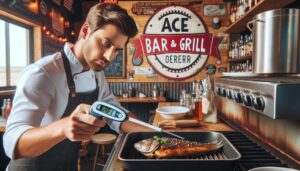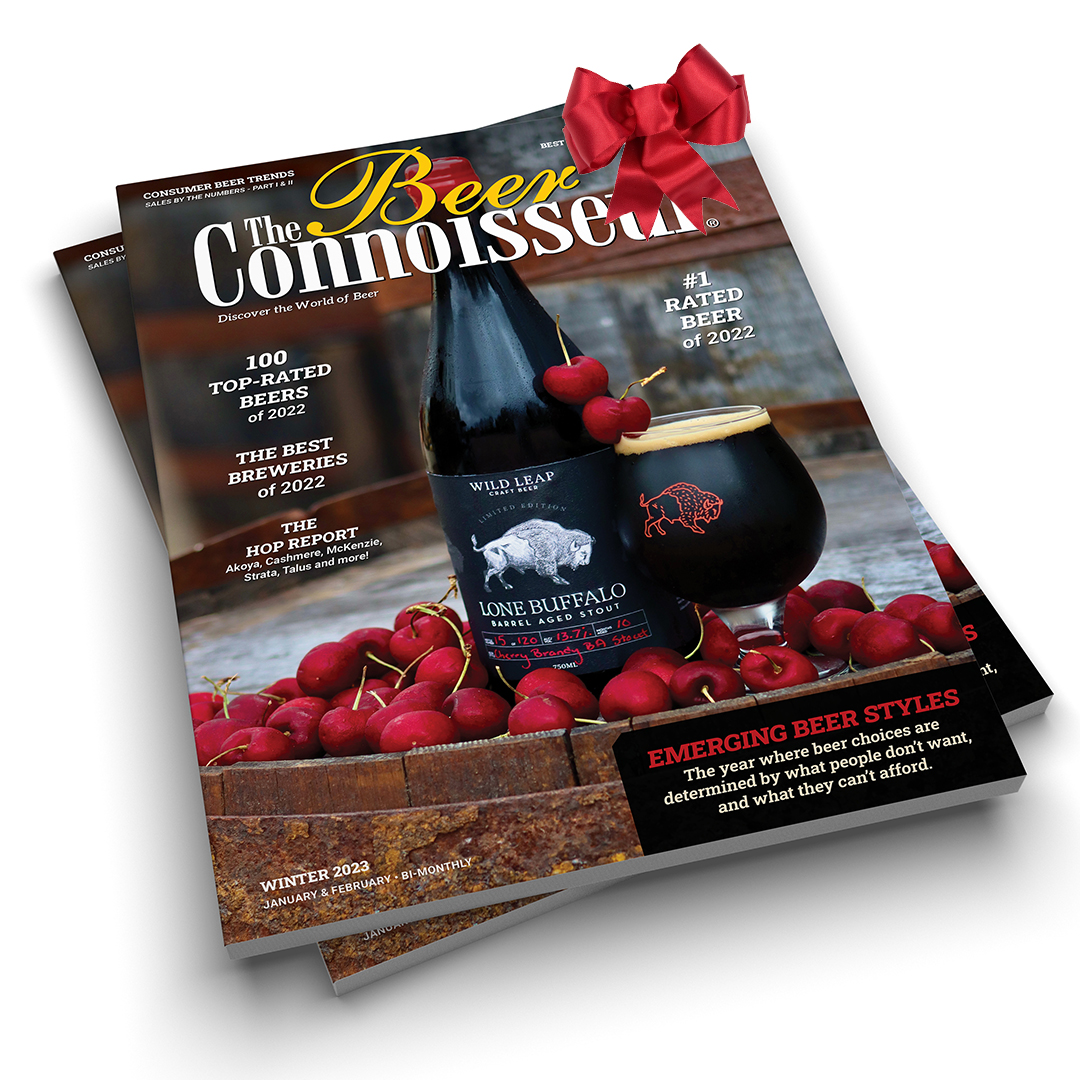Understanding Holding and Cooking Temperatures In the bustling environment of ACE Bar and Grill, maintaining food safety is paramount. One of the key aspects of food safety is understanding the difference between holding temperatures and cooking temperatures. At ACE Food Handler and ACE Training platforms, we emphasize the importance of these temperatures and the correct use of thermometers to ensure food is safe for consumption.
Cooking Temperatures – Understanding Holding and Cooking Temperatures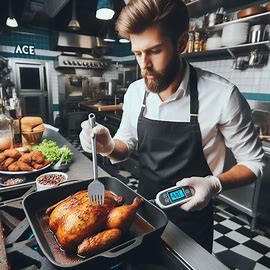
Cooking temperatures refer to the internal temperatures that food must reach to be considered safe to eat. These temperatures are crucial for killing harmful bacteria and pathogens that can cause foodborne illnesses. Different types of food have specific cooking temperature requirements:
- Poultry (chicken, turkey, duck): 165°F
- Ground meats (beef, pork, lamb): 155°F
- Beef, pork, lamb (steaks, chops, roasts): 145°F with a rest time of 3 minutes
- Fish and shellfish: 145°F
Reaching these temperatures ensures that any harmful microorganisms present in the food are destroyed, making the food safe to eat1.
Holding Temperatures – Understanding Holding and Cooking Temperatures
Holding temperatures, on the other hand, refer to the temperatures at which food must be kept after it has been cooked to prevent bacterial growth. The goal is to keep food out of the “danger zone,” which is between 41°F (5°C) and 140°F (57°C). Within this range, bacteria can multiply rapidly, increasing the risk of foodborne illness2.
- Hot Holding: Food must be kept at 135°F (57°C) or higher.
- Cold Holding: Food must be kept at 41°F (5°C) or lower.
Proper holding temperatures are essential for maintaining food safety during service, especially in a busy restaurant like ACE Bar and Grill3.
Best Practices for Using a Thermometer
Using a thermometer correctly is vital for ensuring that both cooking and holding temperatures are maintained. Here are some best practices for using a thermometer in a restaurant environment:
- Calibrate Regularly: Ensure your thermometer is accurate by calibrating it regularly. This can be done using the ice water method (32°F or 0°C) or boiling water method (212°F or 100°C, adjusted for altitude).
- Clean and Sanitize: Always clean and sanitize the thermometer before and after each use to prevent cross-contamination.
- Insert Properly: Insert the thermometer into the thickest part of the food, avoiding bones, fat, or gristle. For thin foods, such as patties, insert the thermometer sideways.
- Wait for a Stable Reading: Allow the thermometer to stabilize and give an accurate reading. This may take a few seconds, depending on the type of thermometer.
- Check Multiple Points: For large cuts of meat or dishes with varying thickness, check the temperature in several places to ensure even cooking.
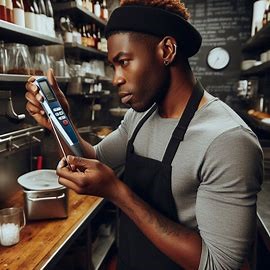
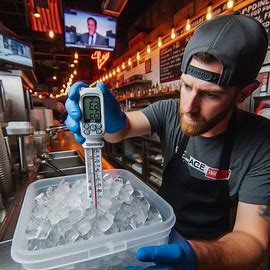

Conclusion
At ACE Food Handler and ACE Training platforms, we are committed to promoting food safety through comprehensive training and education. Understanding the difference between cooking and holding temperatures, and using thermometers correctly, are fundamental practices for any food service establishment. By adhering to these guidelines, you can ensure the safety and satisfaction of your customers.
For more information on our training programs and resources, visit our website or contact us directly. Let’s work together to create safer and healthier food service environments. Stay safe and cook smart! 🍽️
Food Handling Card - Courses
More detailed information about food safety can be found at FoodSafety.Gov and at the FDA US Food and Drug Administration website and ACE Training Platforms and ACE Continuing Education Credits
Food Handlers Training Classes by State
Ohio Person in Charge Training you can purchase a course for only $10 Texas Food Handler Training you can purchase a course for only $7 California Food Handler Training you can purchase a course here only $7 Illinois Food Handler Training you can purchase a course here only $7 Georgia Food Handlers Training you can purchase the course here for only $7 Hawaii Food Handlers Training you can purchase the course here for only $10 New Mexico Food Handlers Training you can purchase the course here for only $7 Arizona Food Handlers Training you can purchase the course here for only $7
Alcohol Seller/Server Courses by State
TABC Training – online only $10 RBS Training – online only $12 RAMP Training – online only $10 Basset Training – online only $10 Louisiana RV Bar Card – online only $9
Texas Department of State Health Services 1100 W 49th St Austin, TX 78756
Ohio Department of Health 246 N. High St. Columbus, Ohio 43215 614-644-7416
Arizona Department of Health Services 150 North 18th Avenue Phoenix, Arizona 85007
General Alcohol Service Hashtags
- #ResponsibleService
- #BartenderLife
- #Mixology
- #DrinkResponsibly
- #AlcoholAwareness
Food Safety and Training Hashtags – Understanding Holding and Cooking Temperatures
- #FoodSafety
- #Training
- #FoodHandler
- #SafetyFirst
- #Compliance
Industry-Specific Hashtags
- #HospitalityIndustry
- #BarManagement
- #RestaurantLife
- #ServerLife
- #BartenderTraining
Engagement and Community Hashtags
- #CustomerSafety
- #CommunityFirst
- #SafeDrinking
- #DrinkSmart
- #ACETraining
Proper Sanitizer Mixing in the 3-Sink System


